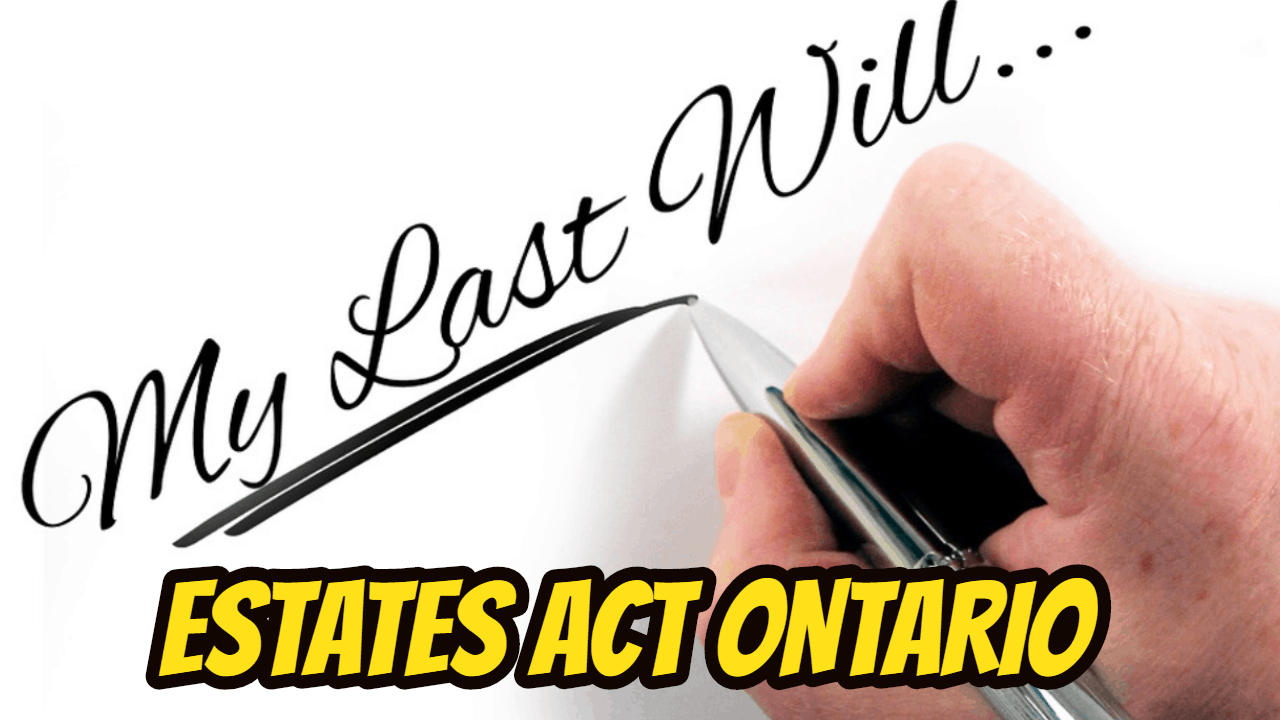[monkeytools msnip=”http://monkeyplayr.com/playr.php?u=5173&p=20226″]
Estates Act Ontario: Introduction
I am continuing my series of blogs to show how it would be very natural to appoint a licensed insolvency trustee (LIT or bankruptcy trustee) (formerly known as a bankruptcy trustee) as the estate trustee (formerly called an executor or executrix) of a solvent deceased estate under the Estates Act Ontario. In this blog, I am going to focus on that piece of provincial legislation that guides the activities of an estate trustee.
In my blog TRUSTEE OF DECEASED ESTATE: WHAT A TORONTO BANKRUPTCY TRUSTEE KNOWS, I set the stage by going over some basics when it comes to a deceased estate and why a LIT would be very comfortable with those basic requirements for an administration of a deceased estate. In the blog, TRUSTEE OF PARENTS ESTATE: DO I REALLY HAVE TO?, I described why in some cases parents trying to do the right thing by making all their children an estate trustee could turn out very wrong.
In this and the next two blogs, I want to focus on the three main Ontario statutes that govern the conduct, duties and responsibilities of an estate trustee of a deceased estate. The three statutes that I will talk about are:
- Estates Act, R.S.O. 1990, c. E.21;
- Estates Administration Act, R.S.O. 1990, c. E.22; and
- Trustee Act, R.S.O. 1990, c. T.23
As you have probably guessed by now, in this blog, I will show how a bankruptcy trustee would be very familiar with the workings of the Estates Act.
Since we are not lawyers, and I am by no means providing in this and upcoming Brandon’s Blogs advice on wills or estate planning matters. For that, you must consult your lawyer.
Provisions a LIT is familiar with
Jurisdiction
Section 5 of the Estates Act Ontario states that letters of administration shall not be granted to a person not residing in Ontario. Similarly, a bankruptcy trustee must be licensed by the Superintendent of Bankruptcy in each province the LIT wishes to practice in.
Posting of security
Section 14(2) of the Estates Act Ontario requires that the administrator appointed to administer a deceased estate may be required to post security as the court might require.
Section 5(3)(c) of the Bankruptcy and Insolvency Act (Canada) (BIA) states that the Superintendent of Bankruptcy can:
“…require the deposit of one or more continuing guaranty bonds or continuing suretyships as security for the due accounting of all property received by trustees and for the due and faithful performance by them of their duties in the administration of estates to which they are appointed, in any amount that the Superintendent may determine…”
The posting of security is another common area that a LIT understands well.
Court can appoint
Section 29 of the Estates Act Ontario deals with the appointment of an estate trustee. This section gives the Ontario Superior Court of Justice the authority to appoint an estate trustee where:
- a person dies intestate;
- the estate trustee named in the will refuses to prove the will;
- where the named estate trustee(s) ask another person be appointed to administer the deceased’s estate; or
- where there are special circumstances.
Section 243(1) of the BIA gives the Court the power to appoint a receiver. So, assessing the appropriateness of acting as a Court officer and providing consent to do so is something a LIT is quite familiar with.
Accounts to be rendered
Section 39 of the Estates Act Ontario requires the estate trustee to “…render a just and full account…” of the estate trustee’s activities. The LIT is fully familiar with this process. In both a Court-appointed receivership and a bankruptcy administration, the LIT must submit full and detailed accounts showing its activities, fees and disbursements for approval by the Court. This approval process is called taxation. This is another common area between the duties of an estate trustee administering a solvent deceased’s estate and the duties of a LIT.
Admitting and disallowing claims
Sections 44 and 45 of the Estates Act Ontario deals with the rules to be followed in contesting claims made against the deceased’s estate. The LIT is very familiar with this process. Section 135 of the BIA deals with the admission and disallowance of proofs of claim and proofs of security.
The LIT is a perfect party to be able to decipher claims made against a deceased’s estate and follow the provincial statute in the allowance and disallowance of claims.
Disputes as to ownership
Section 46 of the Estates Act Ontario describes the process for handling the claim by any third party to ownership of personal property in the estate not exceeding $800 in value. There are steps in the BIA that a LIT must follow when faced with claims of ownership of property by a third party in the possession of the bankrupt. So resolving such disputes is very familiar to the LIT.
Summary
I hope that in this blog I have successfully made the case that the provisions of the Estates Act Ontario outlining the responsibilities of an estate trustee tracks very closely what a LIT does in either a Court-appointed receivership or bankruptcy administration.
Therefore, the LIT is used to acting as a Court officer and could very easily perform the requirements and duties of an estate trustee as described in the Estates Act Ontario.
If you have any questions about a deceased estate and the need for an estate trustee, whether it is solvent or insolvent, contact the Ira Smith Team. We have decades and generations of experience in helping people and companies overcome their financial problems. You don’t need to suffer; we can end your pain.
In my next blog, I am going to write a similar comparison. It will be about the requirements outlined in the Estates Administration Act and how a LIT is most familiar with them also.
In the meantime, if you have any questions at all, contact the Ira Smith Team.
[monkeytools msnip=”http://memochimp.com/memo.php?u=4931&p=3676″]

